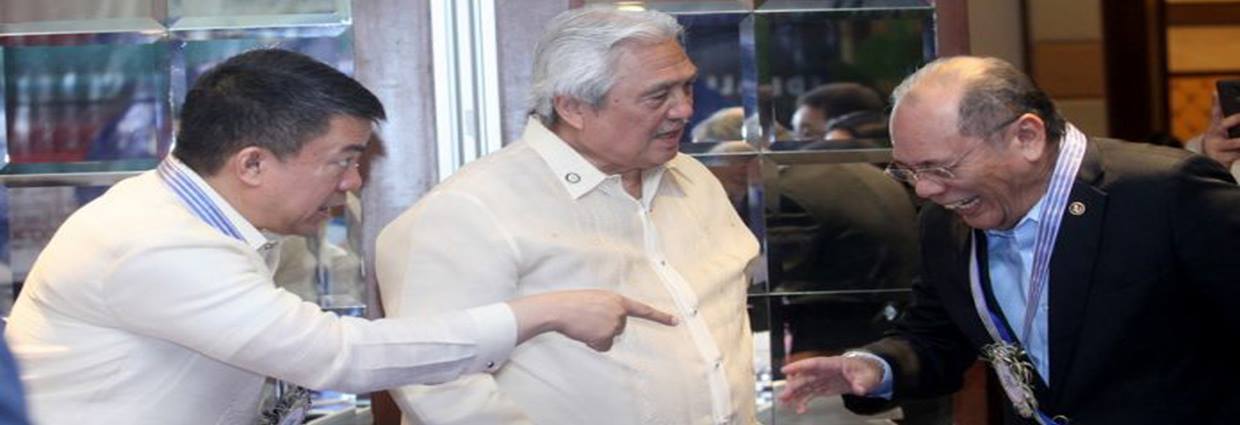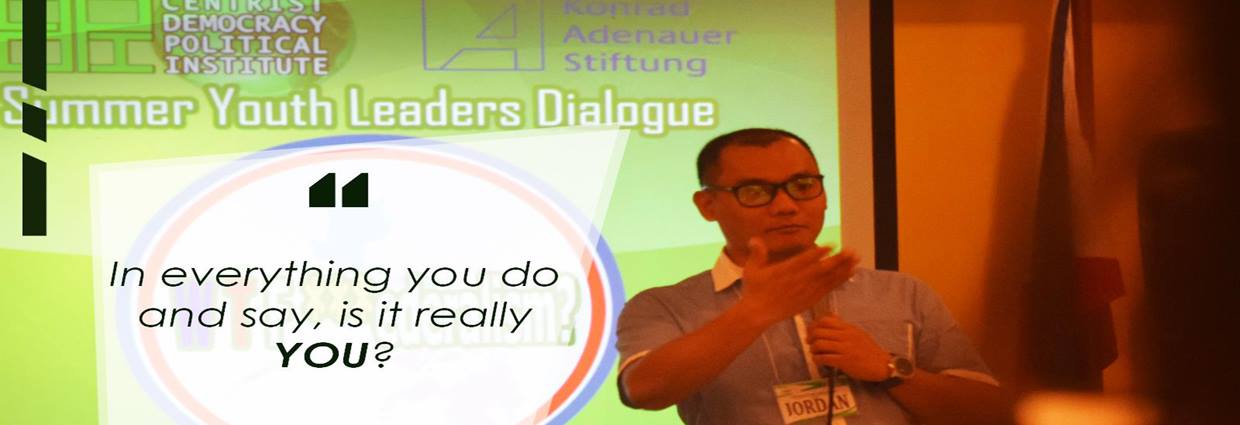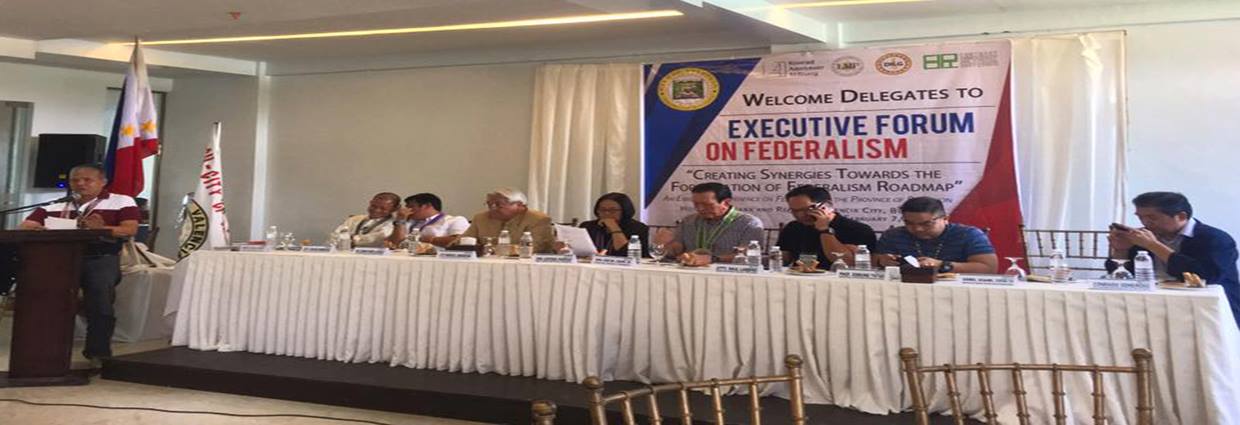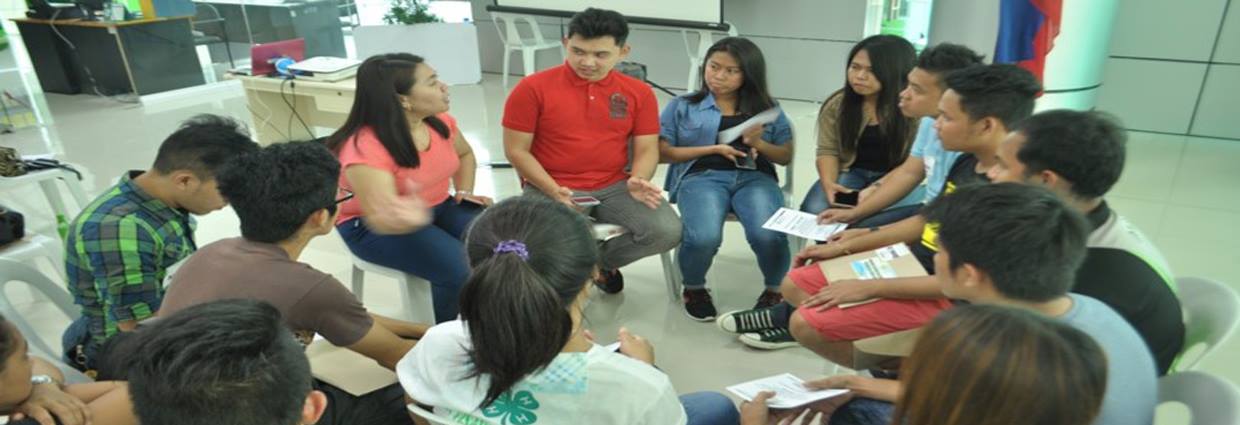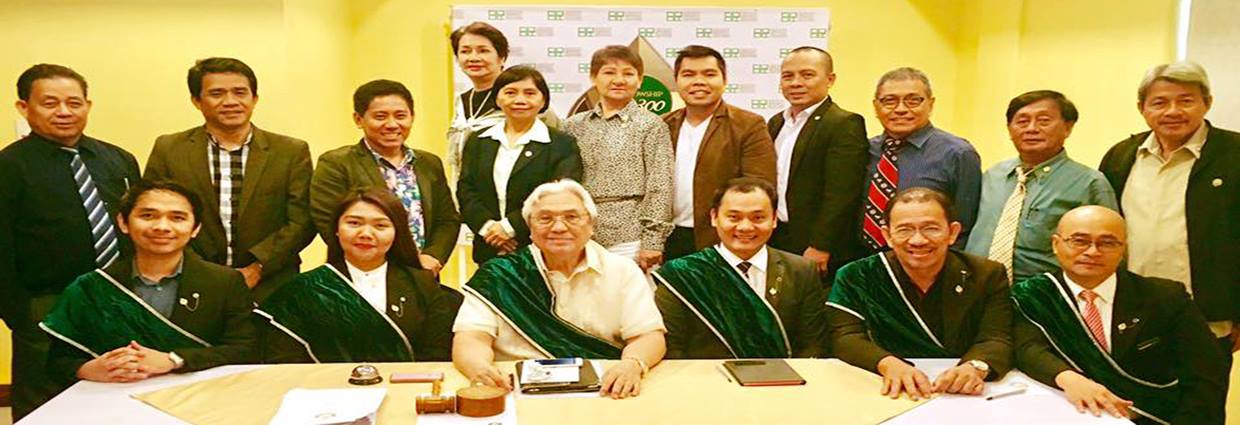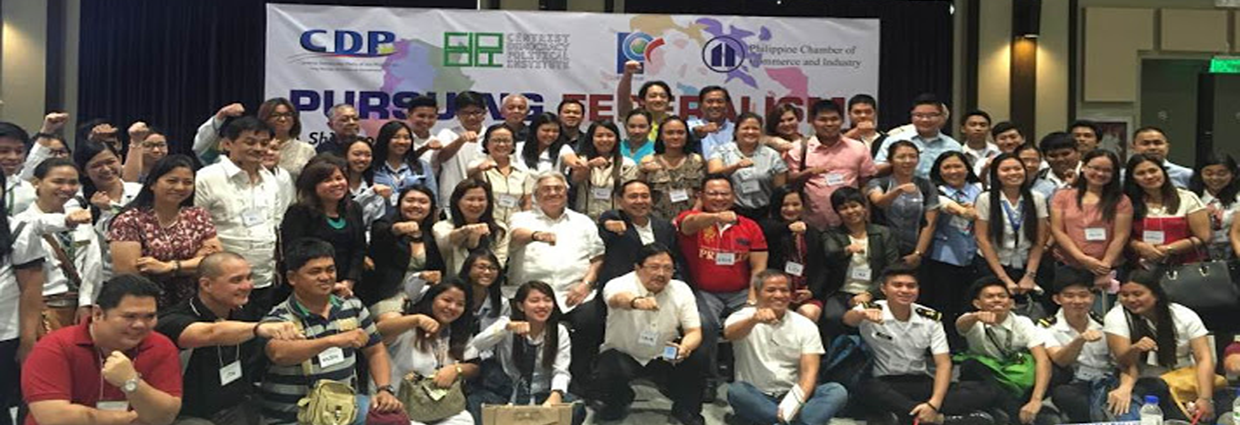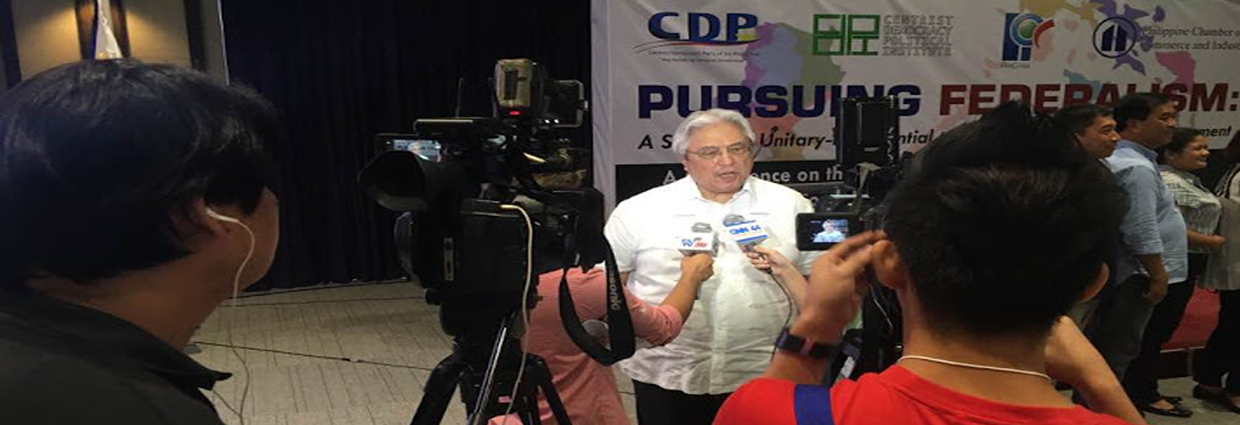Trump ending 7 wars: Deranged peacemaking claims
IN foreign policy, peace-building is one of the most powerful tools a world leader can wield. Throughout his political career, Trump has repeatedly presented himself as a master dealmaker. He boasts about “ending seven wars in seven months,” claiming to have achieved what seasoned diplomats could not accomplish in years (Washington Post, Aug. 20, 2025). Whereupon he unabashedly asked Norway’s Finance Minister Jens Stoltenberg. “He wanted the Nobel prize — and to discuss tariffs” (The Guardian, Aug. 14, 2025).
A factual analysis beyond the political rhetoric to the nuanced realities of international relations reveals that while the Trump administration did engage in a number of diplomatic interventions, his claims are credit-grabbing overstatements. Now his fanatics soften this up, anointing him as a “closer” — a “palusot.” While recent diplomatic efforts have yielded ceasefires, these are in no way synonymous with permanent peace. They instead represent a series of strategic pauses in ongoing, deep-rooted conflicts.
To accurately assess these claims, we need to first establish a working definition of “war”; typically characterized by a large-scale, protracted armed conflict between sovereign states or organized armed groups, resulting in significant casualties and widespread destruction. Or in Carl Von Clausewitz’s dictum, “... merely an extension of diplomacy by other means”; one that the unlettered Donald may not be familiar with.
A ceasefire, by contrast, is a temporary suspension of fighting — a diplomatic de-escalation process of reducing the intensity of a dispute through negotiations and non-violent means. While these are all positive developments, they are different from “ending a war” by resolving its underlying causes. Trump’s typical foreign policy transactional approach sought to achieve immediate, high-profile results, but frequently overlooked the deep-seated historical, ethnic and geopolitical tensions that fuel these disputes. True to his DNA as a reality TV-bred star, form and optics are overarching, rather than substance.
By misinterpreting de-escalation with “peace,” his claims create powerful narratives that diverge from complex realities. In Calinan, we call this “nagkabuang-buang.”
India-Pakistan
A case in point involves the India-Pakistan conflict. Following a period of heightened tensions triggered by a deadly terrorist attack on tourists in Indian-controlled Kashmir on April 22, 2025, Indian missiles struck Pakistan on May 7, 2025, and dogfights ensued in a military campaign codenamed “Operation Sindoor.” A truce was subsequently secured with Trump claiming that he averted a “possible nuclear disaster.” While the US may have contributed to behind-the-scenes pressure, and Pakistan’s leadership at the time credited the United States’ role in brokering a truce, Trump did not “end the war.”
India publicly denied that the US played a direct mediating role in the ceasefire. The conflict was a brief military skirmish, not a sustained war. The ceasefire was a welcome de-escalation, but it did not resolve the decades-long fundamental issues that have plagued the two nuclear-armed nations — the territorial dispute over Kashmir.
Israel-Iran
Similarly, the short-lived but intense Israel-Iran conflict of June 2025 provides another case study of Trump’s chimeras. Israeli/US strikes on Iranian nuclear and military facilities and retaliatory missile and drone attacks from Iran were brought to a halt by a US-Qatari-mediated ceasefire.
However, the conflict’s end was also motivated by both sides’ strategic desire to avoid a prolonged, costly engagement. Israel was exhausted from Gaza and other conflicts, and Iran’s economy was already strained by sanctions. While the ceasefire halted the direct military exchanges, the underlying ideological and geopolitical tensions between the two countries remain. The proxy conflict, fought through Hezbollah and the Houthis, continues to simmer, proving that what was ended was a brief flare-up, not the decades-long state of animosity.
Ethiopia-Egypt
Trump’s claims are not limited to Asia and the Middle East. The dispute between Egypt and Ethiopia over the Grand Ethiopian Renaissance Dam (GERD) provides a clear example of how a persistent issue can be misrepresented as a resolved conflict. The GERD, a massive hydropower project on the Blue Nile, has long been a source of significant tension, with Egypt fearing it will reduce its vital water supply. During his first term, Trump attempted to mediate a deal, but negotiations stalled, and no binding peace accord was ever reached. His recent claim of helping to achieve “peace at least for now” over this issue is an overstatement of the situation, as the dispute continues and no binding agreement has been reached.
Thailand-Cambodia, Armenia-Azerbaijan
The pattern of conflating temporary truces with lasting peace extends to other, less prominent conflicts as well. Trump grabbed credit for resolving tensions between Thailand and Cambodia, and a recent agreement between Armenia and Azerbaijan. In the first instance, the conflict was a brief border skirmish that was de-escalated through diplomacy. In the latter, the agreement, while a positive step, only addresses a portion of the long-standing dispute over the Nagorno-Karabakh region.
Serbia-Kosovo, Rwanda-Democratic Republic of the Congo
These are often touted as “war-ending” successes. However, upon closer inspection, these are revealed to be fragile and incomplete. While the Congo-Rwanda agreement included important steps for disarming militias, the primary M23 rebel group, backed by Rwanda, has since rejected the terms of the agreement. The deal with Serbia and Kosovo, initially brokered in Trump’s first term, also remains incomplete, as the two nations still lack full diplomatic relations. This demonstrates the fragility of a deal made without the direct buy-in of all major parties to the conflict. These simply feature a critical distinction: an ongoing negotiation is different from an enduring peace.
It would be ridiculous to label “these wars ended.” These examples collectively highlight a key feature of Trump’s foreign policy rhetoric: the use of histrionic, simplified language to portray complex and ongoing geopolitical situations as definitive successes. This serves a clear political purpose, allowing him to present himself as a unique and effective global leader to his domestic audience — basically to his adoring MAGA punctuated by the dramatis personae in a White House dramaturgy.
Ukraine-Russia
The most telling example of the gap between political promise and geopolitical reality is the ongoing war in Ukraine. Despite Trump’s bold declarations to end the conflict in a matter of days, recent diplomatic efforts have yielded no breakthroughs. Following a high-profile summit in Alaska, no deal was reached. Yet MAGA foolishly trumpeted Putin’s flying into American territory as a triumph — and Putin’s humiliation. How to reconcile Trump’s “we like each other” visit to Kim Jong-un in 2019?
Ultimately, Trump’s insane claims could be a rhetorical strategy capitalizing on a universal desire for global stability; seeking to elevate temporary ceasefires and stalled negotiations to the level of monumental diplomatic achievements; perhaps underpinning his obsession for that coveted Nobel.
A ceasefire is not peace. True peace requires addressing the root causes of conflict—territorial disputes, ideological rifts, and resource scarcity — and securing the commitment of all parties involved, not just a temporary pause in violence. The language of diplomacy must be precise, and the public must be discerning enough to distinguish between a political slogan and the complex, arduous work of building true and enduring peace.
And therein lies the conundrum. Trump’s language has always been parochial, reflecting the best lights of his “basket of deplorables.” And as an echo chamber, directed toward them.
Ukraine: Trump’s war, no longer Biden’s
TRUMP has always asserted that the Ukraine war was Biden’s having occurred during his watch. “If I were President in 2022, Putin would have not invaded Ukraine.” Trump boasted he would end this war on his first day as president. Then he curtailed weapons delivery to Ukraine allowing the war to aggravate, bringing Ukraine almost to its knees, giving the advantage to his BFF Putin.
In a stunning reversal that has sent shockwaves through global capitals, Donald, the TACO (Trump’s always chickens out) has executed a dramatic U-turn on his administration’s policy towards the war. (The Straits Times, by Jonathan Eyal, July 16, 2025.) This departure from a previously skeptical and often isolationist stance involves a new, multi-pronged strategy: the provision of sophisticated American weaponry to Kyiv, a firm demand for reciprocal military aid from European allies, and a 50-day ultimatum to Moscow to negotiate peace. This braggadocio was intended for his adoring and unthinking MAGA constituents. A toothless threat to Putin.
Failure to comply, Trump warns, will result in crippling sanctions, including a 100-percent tariff on China and India if they continue to purchase Russian oil. This policy pivot, following months of inaction and criticism of US aid, raises critical questions behind these impulses and their potential for success.
Volatile policy shifts
The motivations behind this abrupt shift are far from simple, representing a complex tapestry of domestic political calculus, personal ego, and shrewd economic opportunism, but a more pragmatic analysis points to a confluence of pressures.
Domestically, the electoral calculus is clear: “Trump’s support for Putin has no domestic electoral advantage.” (ibid, Eyal, The Straits Times.) With pressure mounting from within his own party and a public weary of a seemingly endless conflict, a more decisive posture became politically expedient.
Furthermore, there is a distinctly personal element at play. Trump’s reported frustration with Putin’s defiance, despite their previous conversations, suggests a bruised ego. The feeling of being played and insulted by the Russian leader appears to have triggered a reaction that is as much about personal pride as it is about international strategy.
Making money on the side
Beyond domestic politics and personal pique, a significant driver of this new policy is a powerful economic incentive, cleverly packaged as a strategic masterstroke. “The circuitous strategy of selling advanced American weapons systems to European allies, who in turn are expected to send their own Soviet-era or other armaments to Ukraine, is a core component of the plan. This allows Trump to assert that he is not wasting taxpayer’s money on direct aid—a frequent talking point for his base — while simultaneously generating a tidy profit for the American defense industry.” (ibid, Eyal, The Straits Times.) This financially driven approach provides a compelling, if cynical, rationale for the policy’s architecture, blending national security interests with a clear-eyed view of commercial benefit.
This new, aggressive stance is particularly striking when viewed against the backdrop of Trump’s past rhetoric and actions concerning Russia — from once describing Russia’s 2022 invasion as “genius” to being accused of a fundamental misunderstanding of Russian history and intentions. Trump has always been historically illiterate.
A pretend ceasefire
His previous calls for a ceasefire were widely seen as optics, lacking the credible threats or incentives necessary to compel a change in Moscow’s behavior, arguably making the bloodshed in Ukraine worse. This history of perceived conciliation and naiveté makes the current ultimatum to Putin all the more perplexing.
The immediate international reception has been a mixture of relief, apprehension, and deep-seated skepticism. For Zelenskyy, the promise of advanced air defense systems like the Patriot offers a desperately needed shield against relentless Russian aerial assaults. Yet, the 50-day ultimatum introduces a period of intense uncertainty, a high-stakes countdown that could either force a diplomatic breakthrough or provide Russia with a window to intensify its offensive.
Predictably, Moscow has met the announcement with defiance, gambling that Trump’s threats are mere bluster, and that his administration lacks the long-term commitment required for a protracted crisis. Putin has always been cynical of Trump’s bully tactics — being one himself. He has read Trump as TACO and can wait out this latest policy shift.
European allies, while delighted by the renewed American commitment, remain cautiously optimistic, fully aware of Trump’s famously fickle minded approach to foreign policy. The challenge for Europe is now twofold: first, to meet the logistical and political demands of transferring their own weapons to Ukraine, and second, to navigate the risks of escalation that come with it (ibid).
Germany might be pushed to send long-range missiles capable of striking deep within Russian territory, a move that could dramatically heighten tensions. Meanwhile, the 50-day delay before tariffs are imposed on China and India creates its own strategic ambiguity. It could be a genuine attempt to allow these nations to pressure Putin, an opportunity for them to divest from Russian energy, or simply a way for Trump to delay a potentially disruptive trade war.
Ultimately, this dramatic policy U-turn crystallizes into a single, critical question: Is this a credible, game-changing strategy, or is Trump still susceptible to Putin’s manipulation? This implies a newfound resolve born of frustration. Trump may not admit it, but he is being played by Putin and that his previous approach was misconceived from the start. Trump has always been putty in Putin’s hands, a nod to the ex-KGB’s formidable gambling instincts and his proven ability to exploit his adversary’s personality.
Be that as it may, Trump’s audacious policy reversal marks a pivotal yet unpredictable moment. It is a complex gambit born from a mix of political necessity, personal pride and economic self-interest. While it offers a glimmer of hope for Ukraine and a renewed sense of purpose for NATO, its success is far from guaranteed. The coming weeks will reveal whether this is a truly transformative moment that alters the trajectory of the war, or merely another chapter in a volatile geopolitical saga.
We get a hint at the post-Summit Putin-Trump meeting in Alaska this week. Briefly, Putin was “...positive describing the negotiations as constructive framing the meeting as a long overdue necessity, given that relations had plummeted to their lowest point since the Cold War.” He stroked Trump’s ego by confirming that had he been president in 2022, the war would not have occurred. Putin expressed a desire for a lasting settlement that would address the conflict’s primary causes and Russia’s legitimate concerns, not Ukraine’s “...asserting that this personal rapport is the key to bringing the conflict in Ukraine to an end... restoring a more pragmatic relationship between Russia and the United States.”
Trump in his cognitively impaired ramblings countered with classic Trumpian clarity: “There’s no deal until there’s a deal... but we have an extremely productive meeting, and many points were agreed to. There are just a very few left. Some are not that significant. One is probably the most significant, but we have a very good chance of getting there. We didn’t get there, but we have a very good chance of getting there.”
Many thought this was an insanely idiotic retort. The contrast between the two leaders is profound.
Pangilinan replaces Padilla as Senate constitutional amendments chair
MANILA, Philippines — Sen. Kiko Pangilinan is the new chairman of the Senate committee on constitutional amendments and revision of codes, replacing Sen. Robinhood Padilla.
The announcement was made during the Senate’s plenary session on Tuesday afternoon.
For his part, Pangilinan said he would strive to uphold democratic principles and guarantee a consultative and transparent process in any proposed changes to the Philippine Constitution.
“I accept this responsibility with humility and a firm resolve to safeguard the democratic ideals enshrined in our Constitution,” Pangilinan said in a statement.
“The Constitution belongs to the people, and any move to change it must be anchored on their aspirations and welfare. It must also undergo a thorough, principled, and participatory process,” the senator added.
Pangilinan said he would conduct a series of public consultations, which would include input from constitutional experts, civil society representatives, business groups, local government units, and ordinary citizens.
The lawyer said he is hoping that through these consultations, the public would better understand public sentiments on any possible amendments to the political and economic provisions of the Constitution, the mechanisms for amending the Charter, and the broader political and social implications of a constitutional reform.
Padilla, whom Pangilinan replaced, is rumored to head the chamber’s panel on ethics.
The change was made in light of Senate Minority Leader Vicente Sotto III’s remarks that he would favor amending the Charter under certain conditions.
Senate Majority Leader Joel Villanueva previously said they began talking about the reorganization after Sotto voiced that he is “entertaining the idea of supporting Charter change (Cha-cha).”
Cha-cha talks in the upper chamber resurfaced after Senate President Francis Escudero, in a tweet on Sunday, criticized Sotto for allegedly siding with members of the House of Representatives (HOR).
“Go easy. You already sided with the impeachment of the House of Representatives and Speaker Martin Romualdez even if the Supreme Court already ruled that it is unconstitutional and now you’re also favoring HOR and Speaker Romualdez’s Cha-cha?!” said Escudero then.
He ended the tweet with a hashtag that read: “The Senate is not your playground.”
Asked to comment on the Senate President’s remarks, Sotto explained why there is a possibility that he would support Cha-cha.
“What I said was, if the SC ruling stands as is and the Constitution is amended by merely a SC decision, then I will consider supporting a constituent assembly or a constitutional convention to rewrite Article XI of the Constitution because the requirements written in the SC decision [are] impossible to meet,” he told reporters in a text message.
Sotto then proceeded to lambast Escudero, rejecting the latter’s accusation that he was siding with anyone.
“I am not siding with anyone. I am with the Constitution,” he emphasized.
The imperatives for constitutional reforms, political and economic
MY three-part column late last month suggesting an agenda for the incoming Senate discussed cursorily five interrelated topics among the myriad that need reforms: political dynasties, the perverted party-list, the dysfunctional presidential system, political party reforms and a shift to parliamentary government.
Today’s column is an addendum consolidating the above issues in an attempt to propose changes in the Constitution. Our experiences in constitutional revision/amendments over the years have been futile and frustrating given that three of the two methods of revising the constitution — constitutional convention (ConCon) and constituent assembly (ConAss) leave decision-making entirely to the Senate and the House. And they have been indecently dribbling the ball all along, so to speak – unable to free themselves from the shackles of self-interest.
But we, the Centrist Democrats (CD/CDPI/CDP) have not lost hope. We are therefore proposing to the 20th Congress a doable enterprise, this time involving direct participation of our citizenry. The third mode for amending the constitution — people’s initiative (PI). The mechanics will be discussed thoroughly in next week’s column.
PI will target a shift to parliamentary government from a dysfunctional presidential system and the deletion of some onerous constitutional provisions that are restrictive to our economic growth and the Political Dynasty Act. The party reforms and the party-list can be mitigated by the Rufus Rodriguez bill pending in both houses for years now.
Political dynasties
The anti-political dynasty constitutional provision was unequivocal and designed to be self-executory but has not been enacted due to the lack of an enabling law by the very people mandated to do the job but who are by now 80 percent controlled by political dynasties — the legislature.
PI would take effect immediately upon ratification, without requiring further legislative action. We propose a clear definition of a political dynasty: “Members of the same family, within the second civil degree of consanguinity or affinity, simultaneously or successively hold or run for public office at the national or local level.”
The Commission on Elections (Comelec) would be explicitly mandated to strictly implement this provision during the filing of certificates of candidacy. This direct and enforceable measure aims to dismantle entrenched political power structures, open opportunities for new leadership, and foster a more meritocratic and representative political system.
Political party reforms
Perhaps two of the most impactful and eagerly anticipated reforms lie in the proposed new section on Political Party Reform (Article IX, Section C) and the amended Anti-Political Dynasty Provision (Article II, Section 26). The Philippine political landscape has long been criticized for its personality-driven nature, where political affiliations often shift based on convenience rather than ideology, a phenomenon known as “political turncoatism.” PI seeks to institutionalize a genuine party system based on ideology, platforms and democratic principles, explicitly prohibiting political turncoatism, party-switching, and personality-based politics (see “Part 3: Parliamentary govt and political party reform,” TMT, July 30, 2025).
Shift to parliamentary government
To reiterate (TMT, July 30, 2025), at the heart of this proposed reform is the radical transformation of the executive department, advocating for the abolition of the presidential form of government in favor of a parliamentary system (Batasang Pambansa, BP). The existing presidential model has been a consistent source of persistent gridlock, personality-based politics, and weakened public accountability. This stems from the inherent separation of powers, which can often lead to stalemates between the executive and legislative branches, hindering the passage of crucial legislation and effective governance.
Under a parliamentary structure, the prime minister would assume the role of head of government and commander-in-chief, directly elected by a majority of the members of parliament (MP). This direct link between the executive and legislative branches is designed to foster greater political cohesion and responsiveness. The prime minister’s accountability would be immediate and direct, subject to a “vote of no confidence,” ensuring that the government remains aligned with the will of the parliamentary majority.
Complementing this, a ceremonial president, elected by parliament, would serve as the head of state, with powers strictly defined by law. This separation of ceremonial and executive functions aims to depoliticize the head of state role, allowing the prime minister to focus squarely on governance.
Senators, House members to ‘mambabatas’
The legislative arm would also undergo a significant overhaul, transitioning to a unicameral parliament, a single legislative chamber, intended to accelerate lawmaking, reduce bureaucratic hurdles and enhance efficiency. This streamlined legislative body, composed of MPs elected through a mixed-member proportional representation system (see “Perverted party-list...” TMT, July 23, 2025) aims to ensure broader sectoral and regional representation. MPs would serve a four-year term, with eligibility for reelection.
Economic liberalization with national safeguards
Beyond political dysfunction, the economic provisions of the 1987 Constitution, particularly those limiting foreign ownership in key sectors, have been identified as significant impediments to robust growth. Phrases like “limited to Filipino citizens” or the “60-40 ownership rule” in vital areas like the national economy, education, mass media and advertising, while ostensibly intended to protect national patrimony, have inadvertently created formidable barriers to foreign direct investment (FDI), technology transfer and job creation.
This has left the Philippines lagging behind its regional counterparts in attracting crucial capital and expertise, thereby constraining its ability to achieve its full economic potential. This liberalization is not envisioned as an unchecked opening of markets. The amendment explicitly mandates that such laws must “uphold national interest, reciprocity, and strategic control over natural resources, land, media, and critical infrastructure.” This nuanced stance aims to strike a balance: attracting much-needed capital and expertise while safeguarding strategic national assets and ensuring that economic benefits accrue to the Filipino people. Furthermore, the proposal emphasizes inclusive economic growth, regional development, and robust support for local industries and agriculture, underscoring a commitment to ensuring that economic progress is broadly shared and sustainable.
Navigating the transition affirming sovereignty
Recognizing the monumental nature of these changes, the proposed Transitory Provisions (Article XVIII) outline a clear roadmap for implementation. Within one year of ratification, Parliament (Batasang Pambansa) is to be constituted, with the current Congress serving as a “transitional legislative body” tasked with enacting all necessary implementing laws.
The full transition to a parliamentary system is envisioned to be completed within three years, ensuring a structured and orderly shift. The election of the prime minister and president under the new system would occur during the first parliamentary session, marking the official commencement of the new governance structure.
PI is more than just a set of proposed amendments. It is a powerful affirmation of the Filipino people’s sovereign right to shape their constitutional future. It represents a collective aspiration for a government that is not only responsive and responsible but also genuinely accountable to its citizens. By addressing the perceived weaknesses of the current system and introducing reforms that promote equitable economic growth, robust political parties, and a level playing field free from dynastic control, this initiative seeks to lay the groundwork for a more resilient, inclusive, and truly democratic Philippines.
Its success hinges on the collective will and active participation of the citizenry, demonstrating that true change must indeed emanate from the people themselves.
Marcos, tariffs negotiator: A patsy or a grandmaster?
A DIPLOMATIC visit of a head of state is rarely a simple event. It is often a nexus of history, economics and international strategy. In the case of President Ferdinand Marcos Jr.’s recent trip to Washington, D.C. for tariff negotiations, two contrasting analyses emerge, each offering a wholly different interpretation of the same events.
In one narrative, penned excellently in a two-part Manila Times article “China’s coda” by Mauro Samonte (TMT, July 26 and Aug. 2), the author wove his analysis as a geopolitical symphony, depicting the final movement — a finale of an unequal alliance. Classical music buffs will appreciate Samonte’s portrayal of the visit as a choreographed performance orchestrated incongruously by President Trump for America to secure economic dominance and pave the way for an eventual confrontation with China.
In stark contrast, Jaime Yambao’s narrative, “Observations on the president’s Washington D.C. visit” (TMT, Aug. 2, 2025), interprets this as a strategic triumph, a testament to pragmatic leadership and successful negotiation. By examining the rhetorics, historical framings and core assumptions of each, we get a glimpse of how the same facts can lead to such profoundly different conclusions.
A conspiratorial crescendo
First, Samonte presents a deeply cynical and historically informed critique of the US-Philippines alliance. Employing a powerful metaphor of a multi-movement concerto, Samonte suggests that the visit is not a new diplomatic composition but a reprise of historical refrains. This framing immediately sets a tone of historical determinism, implying that the present is merely an echo of the past.
The narrative draws a direct and controversial line from past instances of American exploitation — the post-WWII Parity Rights Amendment, which granted Americans equal rights to exploit Philippine resources — to the present-day Agreement on Reciprocal Trade (ART). This parallel suggests that the ART is not a modern trade deal but a contemporary iteration of a historical sellout, designed to give the US special access to Philippine energy, infrastructure and mineral resources, including those in the South China Sea. The critique is rooted in a fundamental distrust of the US as a partner, seeing it instead as a puppet master orchestrating events for its own geopolitical gain.
It started with Scarborough
The symphony’s overture presumably began with the Scarborough Shoal (Bajo de Masinloc) standoff with China in 2012. To recall, the US deftly steered the dispute from a physical confrontation to a legal one, resulting in the arbitral tribunal 2016 ruling that invalidated China’s nine-dash line claim. This maneuver ostensibly was not a genuine pursuit of justice but a calculated move by America to create a legal basis for future actions against China — with the Philippines’ role as a lackey.
Further solidifying its conspiratorial tone, the narrative links the diplomatic and economic aspects of Marcos’ visit to a broader military plot. The Enhanced Defense Cooperation Agreement (EDCA) is not viewed as a beneficial security pact but as a new form of US military occupation; further asserting that the Philippines is being used as a strategic pawn to push China against the wall. This perspective is fatalistic, concluding with an apocalyptic “coda” that predicts an eventual Chinese dominance.
It also draws on internal class dynamics, arguing that Marcos represents not the Filipinos’ interest but is instead aligned with the “1 percent” oligarchy that profits from these onerous arrangements. Ultimately, the geopolitical symphony is a cautionary tale, a warning against what it sees as a persistent national betrayal, with a dark, inevitable ending.
The pragmatic visit: A strategic triumph
As a contrapuntal, Yambao portrays the same events through a lens of strategic success and diplomatic prowess. Marcos is framed as a skilled and intelligent leader. Here, the metaphor of a chess player replaces Samonte’s symphony aficionado, suggesting a careful, thoughtful and proactive approach to international relations rather than a reactive, predetermined one.
This narrative highlights the tangible, positive outcomes of the visit, such as the reduction of US tariffs on a portion of Philippine exports to 19 percent, a move that would make Philippine goods more competitive. A particularly powerful point is the zero-tariff deal on pharmaceuticals, which Yambao praises as an empathetic move that prioritizes the welfare of the people. Yambao directly contradicts Samonte narrative’s claim that Marcos is only acting in the interest of the elite. This pragmatic visit narrative also reinterprets the security aspects of the trip as a major victory.
Instead of seeing America as a warmonger, Yambao views the US as a necessary and reliable partner in protecting the Philippines’ sovereign interests; emphasizing the visit’s role in providing the clearest policy definition so far of the Mutual Defense Treaty (MDT), with Defense Secretary Peter Hegseth clarifying that the treaty covers armed attacks on Philippine forces “anywhere in the Pacific, including the South China Sea.”
This is framed as a crucial step in safeguarding the country’s EEZ and its natural resources in the WPS. Another plus is the Philippines’ access to additional funding through Trump’s “Big Beautiful Bill” — bolstering defense capabilities, a development seen as a beneficial modernization effort rather than a precursor to conflict. This perspective is fundamentally optimistic and forward-looking, celebrating diplomatic skills and the strengthening of alliances as a path to a more secure and prosperous future.
From where one sits
The profound differences between these two scenarios do not stem from a disagreement over the basic facts of the visit — that it happened, that agreements were discussed and that military cooperation was a topic. The real clash lies in the interpretation of these facts. Samonte’s geopolitical symphony operates from a historical and ideological assumption of American exploitation, viewing every US action through a filter of manipulation and self-interest. It sees the US-Philippines relationship as fundamentally unequal, rooted in a history of neocolonialism. The Washington encounter therefore is a betrayal, the agreements are concessions, and the military alliance is a dangerous trap. And Marcos is a patsy!
Conversely, the pragmatic visit operates from an assumption of sovereign equality and mutual interest. It sees America as a pragmatic partner, a powerful ally whose national interests can be strategically leveraged for the benefit of the Philippines. The visit is therefore a success, the agreements are triumphs, and the military alliance is a necessary shield. And Marcos is a genius!
Ultimately, the storyline choice is between a deterministic, fatalistic worldview as against an optimistic, bureaucracy-driven perspective. One sees the Philippines as a helpless pawn in a larger game, doomed to repeat a cycle of subservience and conflict. The other sees a nation successfully navigating a complex geopolitical landscape, making strategic decisions that assert its interests and secure its future.
These two articles form a compelling study in geopolitical rhetoric, demonstrating how the same “facts” are often just the raw materials that can be woven into diametrically opposed narratives from which competing realities are constructed.
I take the liberty of presenting the contrasting views while not openly taking sides. I leave this to my readers to arrive at their own conclusions while mine shall be held “in pectore” — except for my obvious disdain for the cognitively impaired Trump and the clueless and dilettante scion of a dictator.

